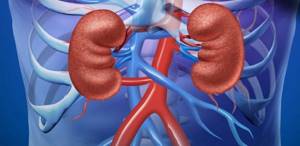What is urea
Urea is one of the products of protein metabolism. Otherwise, this compound is called urea. During gestation, the metabolism of proteins (proteins) is significantly accelerated, since these substances are necessary for the placenta and normal development of the embryo.
Urea is the end product of protein metabolism. This substance is excreted from the body mainly through the excretory organs. The accumulation of such breakdown products is harmful. Urea is an ammonia compound and is toxic to both the expectant mother and the fetus. This applies to increased levels of urea. However, a low level of urea in the blood during pregnancy also indicates pathology.
During the gestational period, the body contains a large amount of fluid. In addition, the excretory organs try to dispose of harmful substances as quickly as possible in order to protect the fetus. These factors lead to a decrease in blood urea during pregnancy. However, a drop in urea levels is not always due to natural causes. In some cases, this may be caused by various pathologies.
Pregnancy with diabetes
According to modern epidemiological data, more than 2 million patients with diabetes mellitus are registered in Russia, but their real number may reach 8 million people. At the same time, approximately half are women of reproductive age1. Sooner or later, every obstetrician-gynecologist has to face all the difficulties of the reproductive period in this group of patients.
The reform of domestic health care rightly strives to provide highly specialized care in large inpatient departments of multidisciplinary hospitals. Here, next to the obstetrician-gynecologist, there are professional endocrinologists, cardiologists, vascular surgeons, and rheumatologists. Pregnant women with complex extragenital pathology require comprehensive monitoring. When it comes to diabetes, this is the golden rule.
Risks to mother and fetus
Pregnancy with diabetes can only be planned. If we are really interested in the end result. It is important that both the expectant mother and the attending physician understand: pregnancy in a patient with diabetes carries risks for both the woman and the fetus.
Standards of analysis
As already mentioned, urea levels can be determined by biochemical analysis. For this study, blood is taken from a vein. This test can be done at any clinic. At the same time, cholesterol, creatinine, glucose and other compounds are also determined.
The normal level of urea in the blood during pregnancy is considered to be from 2.5 to 7.1 mmol/l. This applies to the first half of the gestational period. In the third trimester, the upper limit of normal is considered to be 6.3 mmol/l. In the later stages of pregnancy, the removal of harmful substances from the body, as a rule, increases. The excretory organs work especially actively during this period.
The results of the analysis must be shown to the attending physician. If there are deviations from the norm, the specialist will prescribe additional diagnostic tests.
Urea rate
The permissible presence of urea in the blood varies depending on the age of the person and is expressed in certain numbers:
- 1.8-6.4 mmol/l. – children of early and teenage age.
- 2.5-6.4 mmol/l – adults under 60 years of age.
- 2.9-7.5 mmol/l – over 60 years.
In newborns, this value is slightly higher than children's indicators due to certain physiological characteristics. In women, the normal level is lower than in men.
The content of urea in the blood depends on the state of water-salt metabolism, its synthesis in the liver, as well as the throughput of the renal filter. Indicators within normal limits confirm the presence of a balance between the activities of these organs. Deviations from the norm can be caused by various pathologies; therefore, it is necessary to identify the causes of these manifestations in a timely manner.
The simplest and most reliable method for determining urea is the enzymatic method using urease. Its principle is that under the influence of an enzyme, urea decomposes into carbon dioxide and ammonia.
Blood is taken for analysis from a vein in the morning on an empty stomach. To obtain reliable results, you need to limit your intake of food containing excess protein the night before. This study is carried out to check the functional activity of the liver and kidneys.
Reasons for reducing urea
A reduced level of urea in the blood during pregnancy may be due to the following reasons:
- liver pathologies;
- dysfunction of the pituitary gland and hypothalamus;
- kidney diseases;
- pathologies of the stomach and intestines;
- use of certain drugs;
- lack of protein in the diet.
If deviations in the analysis are associated with poor diet or medication, then such causes can be easily eliminated. In these cases, it is enough to introduce protein-rich foods into the diet or reduce the dosage of medications. Usually, after this, the level of urea in the blood during pregnancy returns to normal. If deviations in the analysis are caused by pathology, then it is necessary to undergo a course of therapy for the underlying disease.
general characteristics
Urea is the end product of protein metabolism in the body. It is removed from the body by glomerular filtration, reabsorbed by the tubular epithelium of the kidneys and secreted by tubular cells. In pathology, changes in the level of urea in the blood depend on the ratio of the processes of urea formation and its excretion. The removal of urea from the body is proportional to the protein content in the diet. Urea excreted in the urine accounts for about 90% of the nitrogenous metabolites excreted from the body. In young children and during pregnancy, due to increased protein synthesis, the urea level is slightly reduced compared to the norm for adults. The determination of urea is used to monitor the state of the process of anabolism and catabolism in the body.
Liver diseases
Liver disease is the most common cause of low urea. This organ is involved in the processing of proteins. Deterioration of its functioning always leads to metabolic disorders.
The cause of a decrease in urea can be hepatitis, cirrhosis, and liver tumors. As a result, a pregnant woman's protein metabolism decreases and urea is formed in small quantities. Such pathologies are usually accompanied by pain on the right side under the ribs, yellowing of the skin and dyspeptic symptoms.
Taking certain medications can adversely affect the liver and lead to a drop in carbamide levels. Such medications include:
- preparations containing acetylsalicylic acid;
- cephalosporin antibiotics;
- tetracycline-based antibacterial drugs;
- cytostatics.
These drugs should not be taken during pregnancy. This is due not only to their hepatotoxicity. Such medications can adversely affect the development of the fetus.

Normal blood urea levels during pregnancy
The final product of protein metabolism is urea or carbamide, which determines, first of all, the performance of the kidneys; synthesis and production occur in the liver.
As a result of the breakdown and transformation of substances, a by-product is formed - ammonia, which negatively affects the functioning of the body. When accumulated in large quantities, there is a danger of the formation of defects in the fetus. The presence of urea in the bloodstream is considered a normal physiological manifestation, since the substance has a high ability to penetrate through the vessels into the blood. A balance of urea content is necessary; only under this condition is normal intrauterine development possible, as well as the functioning of the kidneys, liver and muscle tissue.

To determine the concentration of toxic substances, a general analysis of venous blood is performed. Depending on the stage of pregnancy, the norm may vary slightly. The range limits should not exceed standard values, which range from 2.5 to 6.7 mmol/l. Deviation of indicators becomes a basis to assume a pathological situation in the pregnant woman’s body.
Pituitary and hypothalamic disorders
Diseases of the pituitary gland can also cause a woman to have low urea in her blood during pregnancy. This may be associated with a serious illness such as acromegaly. With this pathology, the patient has an increased level of growth hormone (somatotropin). It suppresses the formation of urea.
The disease manifests itself in the growth of the facial part of the skull, hands and feet. The most common cause of the pathology is a pituitary tumor. The woman needs to consult an endocrinologist and neurosurgeon. If the tumor is large, surgery is performed in the second trimester to remove the tumor. Surgical intervention is performed in the most gentle way - through the nasal passage.

Another reason for a decrease in carbamide may be excessive release of antidiuretic hormone (vasopressin). This substance is produced in the hypothalamus. This condition is called Parhon's syndrome. With this pathology, the level of sodium and urea in the blood drops. The disease is accompanied by sudden weight loss, convulsions and vomiting. It is necessary to limit the amount of fluid consumed and take vasopressin antagonists.
Low urea in the blood during pregnancy
The reasons for detecting urea in the blood below normal may be a lack of protein and as a result of the following pathologies:
- cirrhosis of the liver;
- hepatitis;
- diseases of the intestinal tract;
- malignant tumor;
- chronic pancreatitis;
- drug abuse.
Low levels of urea can also be caused by pathologies of the pituitary gland, which is why there is an increased production of somatotropic hormone.
Therefore, if a pathological condition is suspected, additional hormone tests will be required. Often, urea in the blood is low during pregnancy if there is a lack of nutrition on the part of the expectant mother. The absence or restrictions in the diet of protein foods affects the decrease in carbamide in blood tests. During the period of gestation, the daily menu should consist of a varied amount of fruits, vegetables and meat dishes, so that the body and the child inside the womb receive all the necessary vitamins and microelements. Fasting or long-term diets with restriction of any product are not allowed. Only fasting days are possible, but only with the consent of medical specialists.
A low concentration of urea is often diagnosed in early stages of toxicosis. With a slight decrease in parameters, doctors take a wait-and-see attitude, observing the dynamics of changes. In later stages, a decrease makes one suspect pathological processes in the kidneys or liver.
It is necessary to distinguish between the concepts of urea and uric acid, despite the fact that they are synthesized in the liver. Uric acid leads to the accumulation of sodium salts, provokes the formation of gout and chronic arthritis, and carbamide (urea) retains toxic substances (ammonia).
Diseases of the excretory organs
Often, patients with kidney disease have low urea in the blood during pregnancy. This is observed in nephrotic syndrome. This condition is accompanied by edema, loss of proteins and increased lipid levels. Biochemical blood parameters have serious deviations from the norm. Due to increased protein excretion, carbamide levels are sharply reduced.

When should you get tested for Prediabetes and diabetes (screening)?
- Patients over the age of 45-50 years.
- Patients with marked fluctuations in blood sugar levels.
- Obese people.
- Women suffering from polycystic ovary syndrome.
- Patients with excessive concentrations of cholesterol in the blood.
- Insulin-dependent and non-insulin-dependent diabetes mellitus (diagnosis and monitoring of the disease);
- Diagnosis of prediabetes.
- Preventive examination of patients with a family history of diabetes mellitus (complicated family history).
- Pathology of the thyroid gland, adrenal glands, pituitary gland;
- Liver diseases;
- Determination of glucose tolerance in individuals at risk of developing diabetes mellitus;
- Pregnancy diabetes;
- Impaired glucose tolerance
Gastrointestinal pathologies
Urea may be low due to irritable bowel syndrome or enteritis. With such diseases, the absorption of proteins and other nutrients deteriorates. Gastroenterologists call this condition malabsorption. It is characterized by anemia, diarrhea, vitamin deficiency and a feeling of constant fatigue.
A decrease in carbamide is also observed in patients with pancreatitis. Chronic inflammation in the pancreas negatively affects protein metabolism. The patient complains of pain in the middle of the abdomen and nausea.

How to normalize low carbamide levels
During pregnancy, first of all, you will need to undergo additional studies to find out the main reasons for the decrease in parameters.
Drug therapy is used when diseases are detected that provoke a decrease in normal values. It is extremely rare to observe a decrease in urea due to the development of diseases. The main factor is always malnutrition and metabolic disorders. Therefore, treatment most often consists of prescribing a diet where meat, fish and dairy dishes will predominate.
Strict diet
Often, blood urea is low during pregnancy in women following a vegetarian diet. Protein is found mainly in meat foods. If a woman excludes such foods from her diet, this leads to protein deficiency and a decrease in carbamide. If the expectant mother is a supporter of vegetarianism, then she should consume as many other protein-rich foods as possible. They can replace meat food. Such foods include:
- eggs;
- milk products;
- dishes from legumes;
- walnuts;
- buckwheat porridge;
- mushrooms.

You should not completely deprive your body of protein foods. During pregnancy, it is unacceptable to adhere to too strict diets. After all, proteins are necessary for the normal development of the fetus.
Blood clotting during pregnancy
The blood coagulation system is one of the most complexly regulated systems in our body. The processes of thrombus formation are in a certain balance with the processes of fibrinolysis. If this balance is disturbed, pathological phenomena can be observed - hypercoagulability or, on the contrary, a tendency to bleeding. Of course, this is always facilitated by certain factors, one of which is the pregnancy period.
During pregnancy, under the influence of various influences, most normal processes in the body change. The most well-known fact is the decrease in immunity, which is considered as a protective reaction of the body. After all, the fetus in the early stages can be perceived as a foreign protein, in which case the insufficient functioning of the immune system is only for the good, since the body does not fight against the baby. But not everyone knows about this feature and in some cases they try by any means to influence the state of immunity in order to avoid frequent viral diseases and exacerbation of existing chronic infections.
Similar changes occur with the blood coagulation system. During pregnancy, increased thrombus formation normally occurs. This can be explained by the body’s preparation for subsequent possible blood loss during childbirth. Also, the properties of blood during pregnancy change due to the increasing load - blood flow and sufficient nutrition are required towards the placenta, which is abundantly supplied with blood. The developing systems and organs of the fetus also affect the characteristics of blood clotting. If such changes are insignificant and fit within the norms for pregnant women, then pathology of hemostasis is excluded. But in cases where there are pronounced disorders, especially those accompanied by a clinical picture, it is important to diagnose this condition in a timely manner and decide on the need for drug correction.
One of the indicators that pay special attention to during pregnancy is D-dimer.
. D-dimer is a breakdown product of a formed blood clot, thrombus. The more pronounced thrombus formation, the more D-dimers are formed from blood clots. Based on their level in the blood, one can assume hypercoagulation, that is, increased coagulation and thrombus formation.
During pregnancy, D-dimer is normally slightly elevated
. Please note that laboratories always provide reference values by trimester, but only the attending physician can accurately diagnose pathological coagulation, taking into account complaints and the clinical picture. First of all, the obstetric and gynecological history is taken into account. Thus, in case of previously unsuccessful pregnancies that ended in miscarriage, loss of the fetus, or if an elevated D-dimer is detected, a consultation with a hematologist is indicated to resolve the issue of prescribing anticoagulants. But if an increase in D-dimer is observed once, and there are no signs of thrombus formation, the patient’s medical history is unremarkable, doctors usually choose observational tactics, although several years ago even slight increases in D-dimer forced specialists to include heparins in therapy. Now clinical recommendations are drawn up in such a way that the approach to studying the properties of blood is extremely comprehensive and is not limited to just the assessment of D-dimer. Be sure to take into account the general coagulogram, the presence of varicose veins, a history of thrombosis, and the presence of recurrent miscarriage syndrome.
In women with 2 or more pregnancy losses, an in-depth study of blood properties is indicated already at the planning stage. It should be noted that against the background of existing pathological blood conditions, conception is quite possible, but further progression of pregnancy without proper correction can be significantly difficult and even impossible.
Signs of decreased carbamide
A decrease in urea levels negatively affects the general well-being of a pregnant woman and the development of the fetus. The following symptoms are noted:
- the appearance of edema;
- low weight gain;
- increased hemoglobin in the second and third trimester;
- high blood pressure;
- intrauterine growth retardation.
If you find such manifestations in yourself, you should consult a doctor and undergo an examination. This may be a sign of decreased protein and urea levels.
Main features
A decrease in urea without taking the appropriate test can be difficult to determine due to the lack of pronounced symptoms. This deviation can be assumed only based on some secondary signs:
- Bloating and unpleasant belching.
- Muscle weakness and swelling of the limbs.
- Poor appetite and weight loss.
- Heaviness in the right hypochondrium.
- Chronic fatigue syndrome.
If these symptoms appear, it is advisable to consult a doctor who, using a blood test, can identify the causes of such manifestations.
If urea is elevated
There are cases when a pregnant woman has increased urea in the blood. The cause of this is most often uremic syndrome, in which kidney function is impaired. This condition is a complication of infectious diseases. Sometimes uremic syndrome develops after vaccinations. Therefore, during pregnancy it is necessary to protect yourself from infection with viruses and bacteria, and it is better to postpone vaccination until the postpartum period.
However, often, even in the absence of renal pathologies, the patient has increased urea in the blood. The reasons for this may be burns, intestinal obstruction, leukemia, bleeding.
Urea is a toxic substance and increasing its level negatively affects the health of the woman and the unborn baby. The patient complains of nausea, abdominal pain and fatigue.

Detailed description of the study
Urea is a nitrogen-containing compound produced in the liver as an end product of protein metabolism. About 85% of urea is released when blood is filtered by the kidneys. The rest is through the gastrointestinal tract (GIT).
The urea content in the blood reflects the ability of the glomeruli of the kidneys to filter the blood and remove unnecessary substances from the body. The study of this parameter is carried out to identify kidney pathology.
The level of urea in the blood increases with renal failure of any origin. Damage to the kidneys reduces their ability to effectively remove metabolic waste products from the body. The observed pathological increase in the concentration of urea in the blood is called “uremia”.
Uremia may not cause any symptoms, but is often associated with nausea, fatigue, lack of appetite, weight loss, muscle spasms, and itchy skin. In case of severe impairment of the removal of urea from the body, mental disorders are observed.
Blood urea levels may increase under conditions unrelated to kidney disease, such as upper GI bleeding, dehydration, fasting, or a high-protein diet. The study of another important indicator - serum creatinine - helps to clarify the cause of the increase in urea concentration.
Determining the concentration of urea in the blood allows one to assess the filtration function of the kidneys.
How to normalize carbamide levels
If a decrease or increase in urea is caused by pathologies, then it is necessary to undergo additional examination. Then, based on the test results, the doctor prescribes treatment.
When carbamide decreases, the patient is also advised to pay attention to her diet. You need to eat as much protein food as possible. If urea is elevated, then a diet is prescribed with limited protein-rich foods.
After completing the course of treatment and adjusting the diet, the urea level returns to normal. During pregnancy, it is very important to pay attention to the biochemical composition of the blood. After all, any deviation from the norm can negatively affect the condition of the fetus, and then the health of the newborn.
Complexes with this research
Preventive check-up Universal annual preventive screening RUB 7,730 Composition
Expanded hospital complex Expanded infectious screening for prevention and hospitalization RUB 4,910 Composition
Biochemistry of blood. 8 indicators Minimum biochemical blood test 990 R Composition
IN OTHER COMPLEXES
- Examination during pregnancy. 3rd trimester 6,310 RUR
- Female infertility RUB 10,650
- Kidneys. Extended examination RUB 1,340
- Kidney screening RUR 780
- Biochemistry of blood. 13 indicators 2,440 RUR


